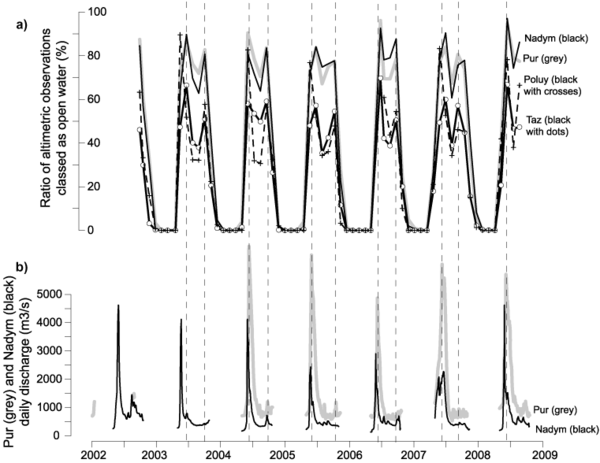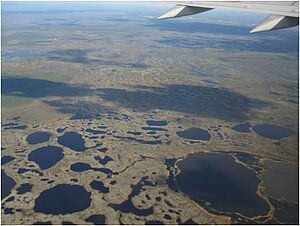Missing: water

Western Siberia is home for some of the most extensive river systems that drain into the Arctic Ocean, including the Poluy, Nadym, Pur and Taz rivers, in the North. The flat relief of the region creates a multitude of rivers, lakes, wetlands, mires, etc. covering 35 to 70 % of the surface, and part of the region is affected by permafrost. This makes it especially sensitive to climate changes.
Satellite radar altimetry enables to estimate the extent and variability of flooded and wet zones. The two flood seasons are well observed (spring flood linkd to ice melt and summer-autumn rain flood).
However, one of the curiosity of the region is that at least 30% of the water from the precipitations is not found in the river run-off during the floods. It is supposed that it is stored in the wetlands and either run off slowly or evaporate (the large surface of waters increase evaporation). But this rate increase... up to 50-60% during the 2000s are thus not found in the run-off. At the same period the air temperatures have increased, which leads to suspect increased evaporation. But other things are probably contributing: change in vegetation, permafrost, etc. Infrastructures and fires can also have an impact.

References:
- Zakharova, E. A., Kouraev, A. V., Kolmakova, M. V., Mognard, N. M., Zemtsov, V. A. and Kirpotin, S. N., 2009: The modern hydrological regime of the northern part of Western Siberia from in situ and satellite observations,International Journal of Environmental Studies,66:4,447 — 463. DOI: 10.1080/00207230902823578




